#that's the difference between geto and nanami. although as we can see nanami also based quite a lot of his self-importance on gojo
Text
Exploring the symbolism of the Tsubaki / Camellia and Gojo Satoru

Cover of vol. 26 shows us the beautiful image of Gojo on a snowy day; his breath tints white - he is surrounded by what we can interpret as Camellias in full bloom, location unknown, but we surmise it is sometime between December - March (depending on source of information - usually late winter to early spring) where they tend to flower despite the cold.
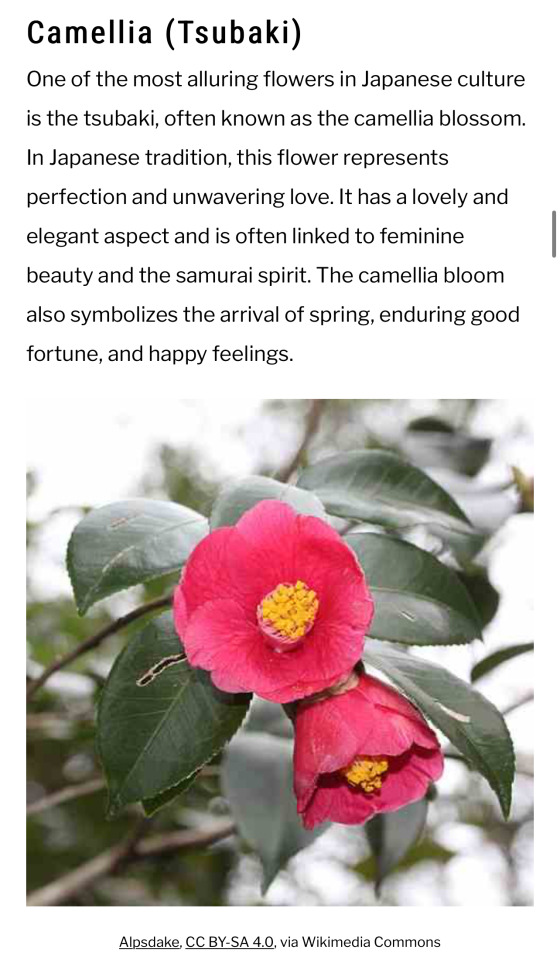
More under the cut. Please be warned: This post is littered with information, and you may interpret it freely, however you wish.
Just be mindful that I almost always have a Satosugu lens is on. Headcannon and overall reaching is all on me!
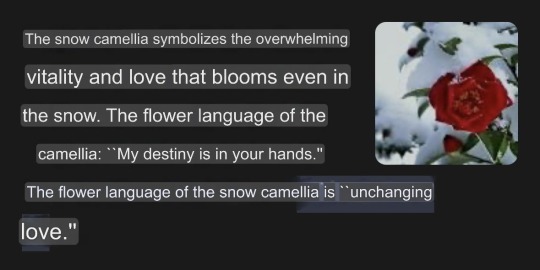
The setting is simple but poetic. It’s snowing and Gojo is standing looking at us. It’s blue all around him; a crisp winter’s day. Gojo’s birthday reflects the heaviest snowfall (refer to character birthday chart below), so in addition to flower symbolism is potentially the symbolism of dates. We know Gege is deliberate like that. Is this headcannon? You can decide!
The plant looks really beautiful amidst the snowfall. Their leaves are evergreen and lush, so looking even at the foliage, the plant seemingly being taller than Gojo as painted by Gege, it would appear to be more like the Camellia than Peonies. Very much like what tends be be planted at a Shinto / Buddhist temple gardens.
And what does it mean then? Let’s keep going:

Those pictures above are the red varieties, but they can appear very different - coming in different colours and the way the petals are arranged, colour of the middle, etc. varies. Upon closer inspection, we see two types pictured on the cover.
Behind Gojo’s head seems to be a flower in a lighter shade of pink, and akin to a lotus camellia. I’d say it’s stylistic and has symbolic intentions, and you can google to look into what others have to say about it. Generally, it’s around being enlightened, freedom and purity. All fitting with Gojo’s life (his fate at birth) and death.
Before I continue, I must address the question: is it possibly any other type of flower? Well, sure. You’re welcome to interpret it that way, it’s a drawing after all. However, based on how tall the plant is, the thickness of the branches the leaves are attached to, as well as the blossoms, it seems more like a Camellia plant to me.
Moreover, I cannot ignore the inference from the conversation we see him have with Nanami in chapter 236 - that his death was fitting, and his reflections of it were considered “old fashioned” like a commanding officer’s (bushou) view of a swift and noble death. When we consider the symbolism of the flower and the fact that it is a late-winter blooming plant... it fits.
It also fits in with Gojo’s beliefs in his conversation with Megumi when he was alive. To die victoriously because he gave it his all, in an individual sport, and also died thinking he had an ace up his sleeve.
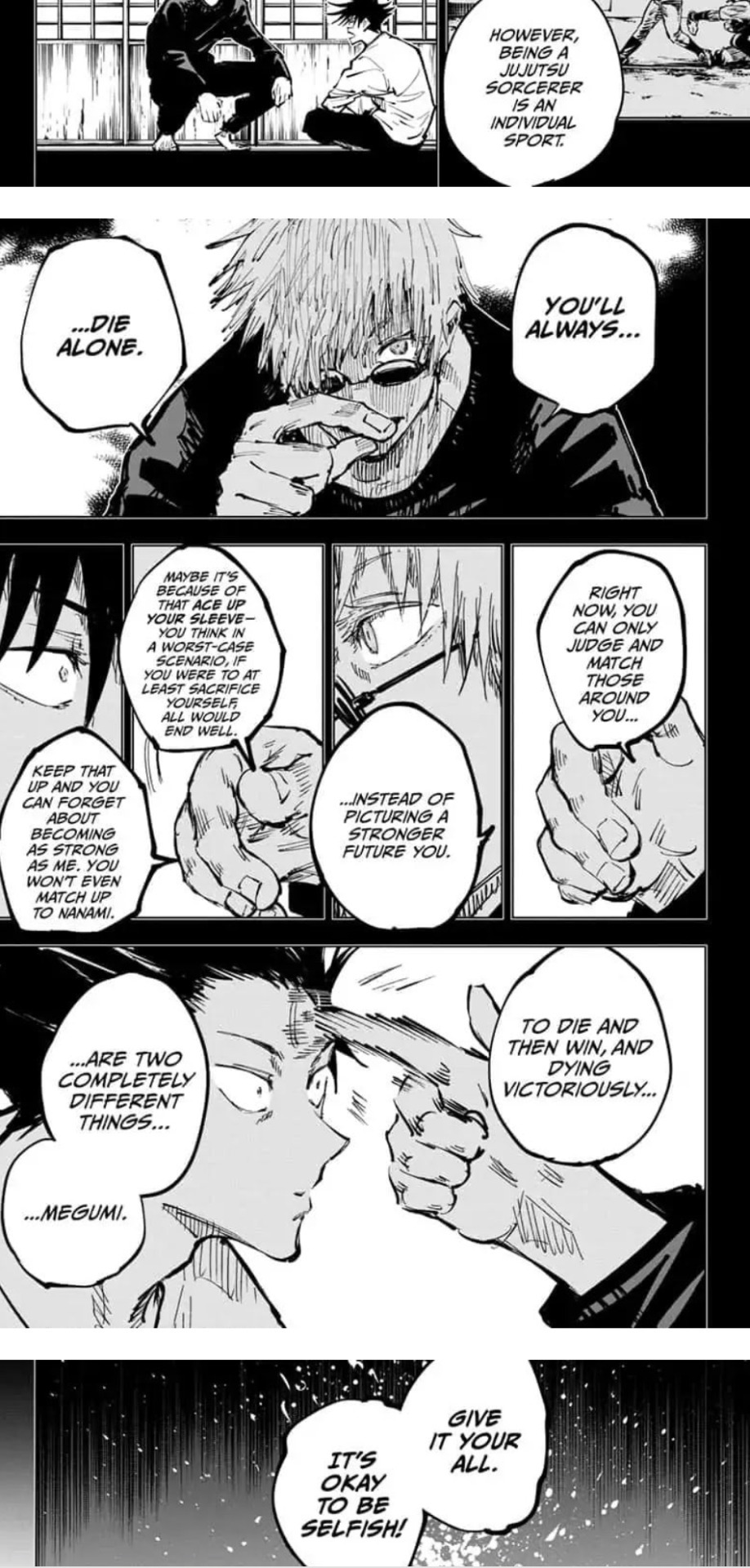
Just to add some of my interpretation in here: He died trying to reach Megumi as well as fulfilling his ideals, despite not winning. He was satisfied.
As in my previous post on ch. 236 (see: https://www.tumblr.com/lxmelle/745848828838756352/thoughtsponderingsmusings-on-ch-236-about-gojo I feel that each expression drawn was a decision made, and can sometimes be absolutely deliberate in how it tries to convey something - so, it can be very telling.
Gege is a huge fan of using repetition to foreshadow something or draw connections to emphasise a point or relationships.
I don’t think it’s headcanon when we know as a reader that gojo is an unreliable narrator. We would be doing him a disservice. He can “whale on Megumi” because he has killed his best friend before. It is but "fighting talk".
He could do it, but with difficulty, as we know it was horrific for Gojo to have done to Geto and he put it off for as long as he could, nevermind the expense to human lives (although I doubt Geto killed indiscriminately too much as it’d draw too much attention - he probably hunted curses using those weekly “Wednesday special” shows Gege talked about in the character book as well as within his temple through visitors).
We see Gojo’s eyebrow furrow when he noticed Megumi had been taken over by Sukuna upon his release from prison realm. In battle, he also scans Sukuna for Megumi’s soul.
I digress. Sorry.
Gojo did fight with everything he had - every ounce of power - forcing his brain into overdrive… in vol 26, there are images gege drew to illustrate just how overextended he was with a bleeding brain.
Gojo absolutely surpassed his ancestors and achieved so many unprecedented things within that one battle - and died in a sudden world slash, slicing through him. It wasn't a fair fight to begin with, we know that. Sukuna used Megumi to tank UV hits and had a 3v1 setup going.
We should all be proud of his performance. He put himself on the line; and even Sukuna was impressed. He had an ace up his sleeve but didn't sacrifice himself - he burned brightest and it was his all.
Sukuna can have the title because he's practically sold his whole entire self to be the embodiment of a curse. Gojo died to a calamity. A calamity with decades of fighting experience, whereas Gojo was a mere baby compared to him, and yet already achieved so much, and his legacy will continue.
The suddenness of his passing shocked us all. This is also symbolic of the Camellia, where in the negative, it can imply a sudden death, by beheading. In the positive, it means unity - a love tied together by the way the flower falls whole.
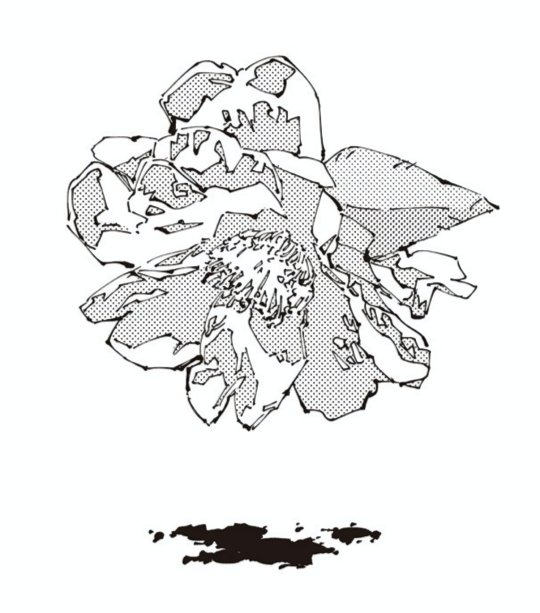
Gojo... was killed in that way. Being somewhat beheaded. Bisected. The image above is from vol 26. Gojo died a noble death fighting with his all, in battle.

Nevertheless, one can imagine Gojo seems to have risen in spirit on this snowy day as his body has been left behind. He is smiling at... the reader, the others left living, or... at Geto? More on the latter later, as it'll enter headcanon and shipping territory.
So if it indeed is a Camellia, there were different meanings for the Camellia based on its colour.

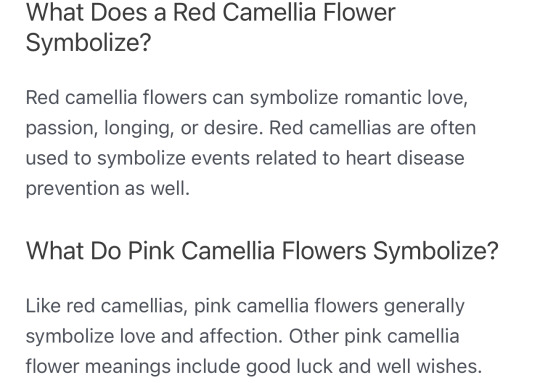
Different counties have different meanings for the blossom, but some things appear universal. Just some examples of cultural differences. Western interpretations are more around love as a theme. Since jjk is from Japan, I’ve included these to offer a more regional and diverse interpretation for this piece of writing:
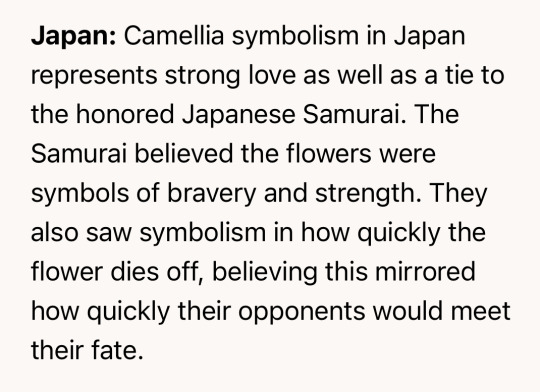
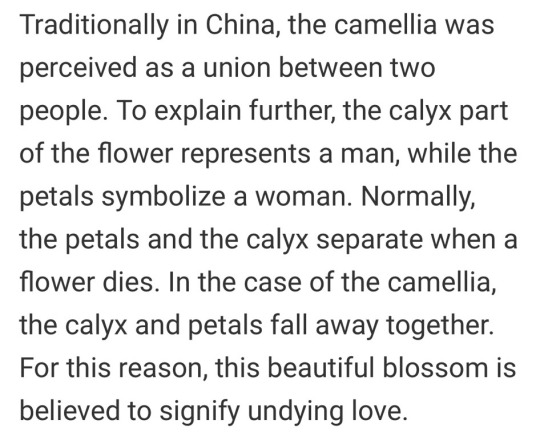

Generally speaking, the Camellia plant is admired for its entirety: its evergreen and robust leaves are hardy, in addition to its gorgeous blossoms.
We know that Gege chose pink for some reason. Gojo also smiles somewhat alike his smile in death which is a little disturbing, but may be a bit like what Geto’s body did? Or, a symbol of him actually lucid dreaming at his death and the airport scene was not real (but Gege’s approach is a bit “mystical” for this interpretation- he brought Toji back to life after all, plus all the stuff about souls and touching it etc.)
Now we take a deeper dive into the symbolism of the flower. Mind you, depending on interpretation, I may be reaching, but I honestly did not make any of this up.
I think Hanakotoba is something that Gege has an interest in, alongside playing the long game and usage of foreshadowing, mythology, religion, and popular culture). He really is a clever writer, although I’m aware opinions vary as of late due to various reasons.
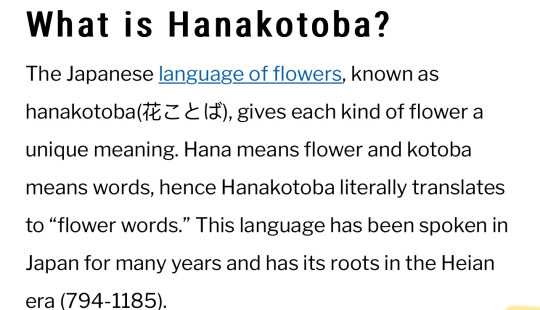
And Camellias...?

Outside of hanakotoba, culturally, the Camellia also bears a potentially ominous / inauspicious meaning. To expand further and echo what’s already been said above:
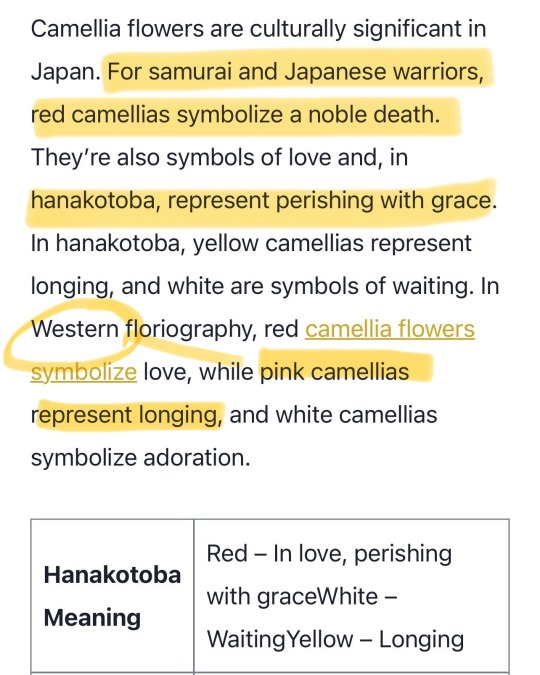
Plus, the Western interpretation is quite similar, isn’t it?
And Gege really, again, could have gone for a different colour and it would still be imbued with impressively deep meaning. Red, white, but for whatever reason, he opted for pink - longing. Is he longed for? Well: Yes! By us readers and his students. Does he long for anyone? Hrmmm… let’s look at the clues as we go along. *resists shipping mode*
Another source has this to add about what pink Camellia flowers are in flower language...
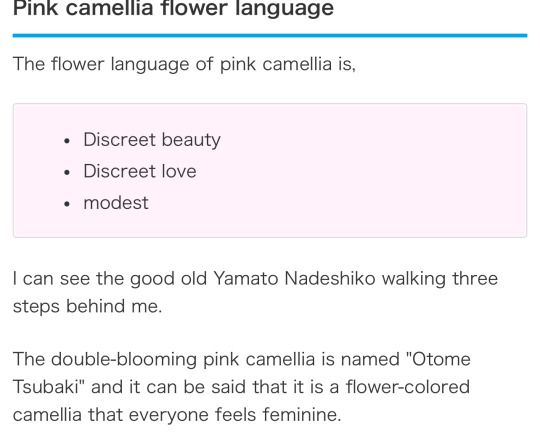
What about the history of the Camellia?

The camellia was named as a priest’s helper. Seriously you cannot make this up. I lol’ed at this. It HAS to be a coincidence right?
*resists shipping and reaching* ha ha!!
Moving on…
And what does religion have to say about the symbolism of the Camellia?

Ah yes , indeed very fitting and auspicious signs for our beloved Gojo. Freedom, new beginnings, a triumphant victory for his spiritual self.
Shintoism:
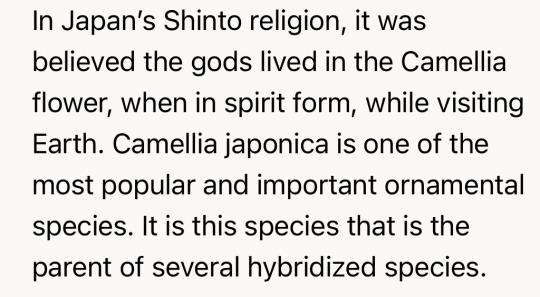
This, I find it intriguing how it can also explain how Gojo was amongst flowers on the cover, and then also at the airport. Like: where are you, really? If you want to read more, here is the link: https://justaboutjapan.com/what-happens-after-death-in-shinto-understanding-the-japanese-afterlife/
Certainly interesting ; I find it poignant and spiritual in interpretation of the world. Like the concept of continuing bonds in Grief work.
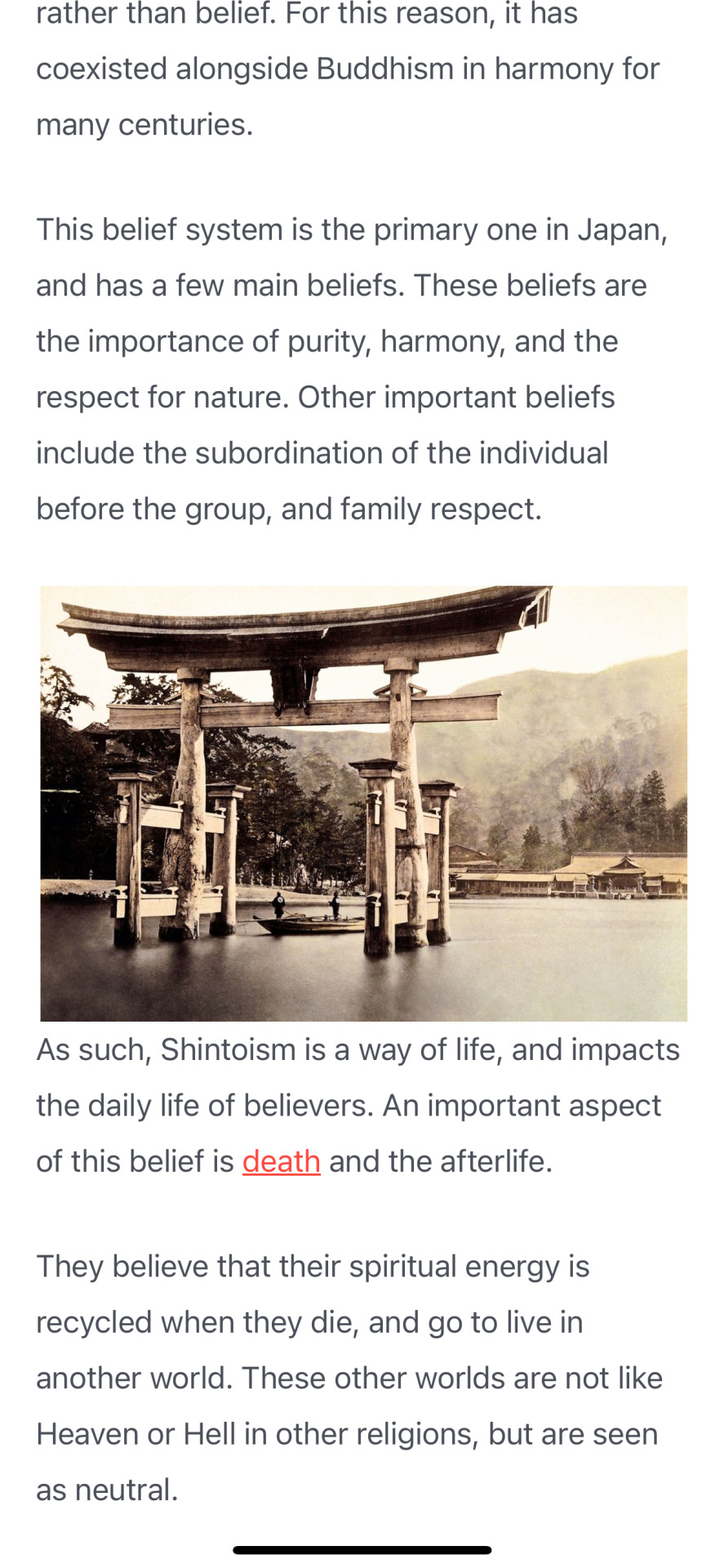

Make what you will of the information! I have no idea where the airport is or where they are headed (or if they even head out to the same place… I hope they do. I guess that’s what my fanfics are for, lol).
Now. That’s already quite a bit of information, right? But you know... it doesn’t stop there.
The Camellia represents the birth flower for Geto Suguru. (And yes I checked, it is nobody else’s).


Is it coincidental? Maybe?
Yesssss we are in Satosugu shipping territory! Take it with a pinch of salt. *shrug* I’m not really going to make any apologies for my insanity brainrot.
What about other flowers, if I were to stretch it a little and bring the lotus symbology into the picture? Referring back to chapter 236 and how Gojo himself reflected on being a creature with a line drawn, and the lotuses.

Ah, excuse me!! Chastity? Purity? Being far from the one he loves?! Stop right there, Gege!!! *slaps self* okay, I’m calm now.
Back onto Camellias. Turning to the West now, which has reached international shores for decades: The story, the Lady of Camille portrays two young people in a romance doomed, within a punishing culture, marked by longing, and separated by death. It is also not without controversy, as the woman was a prostitute, but the writer depicts her kindly, as if her redemption was due to her ability to love alone. Sounds familiar?
Again, I’m not making this up. This is the cover of the novel.
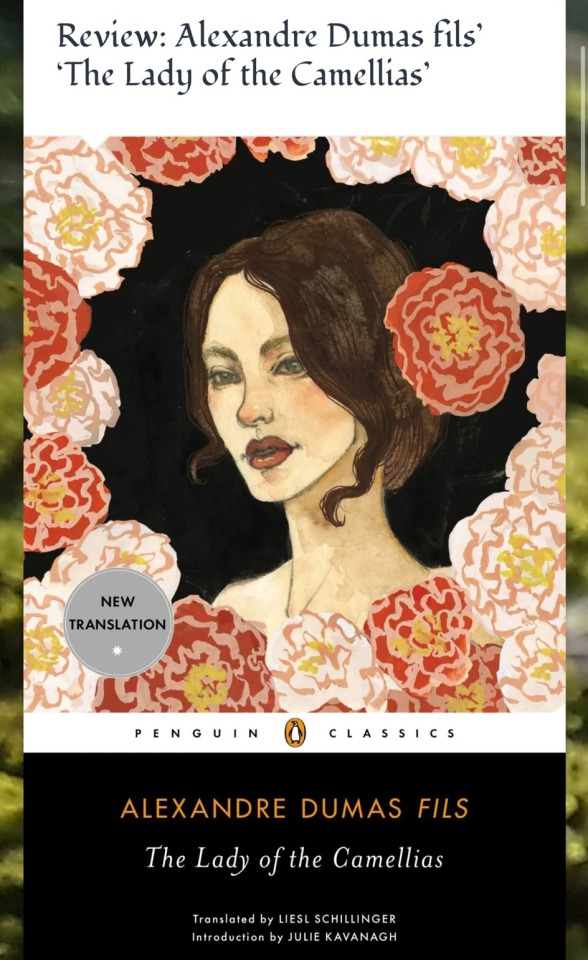
And some excerpts of the novel (you can google this as I have, if you wish) that you can be free to interpret based on your own understanding:

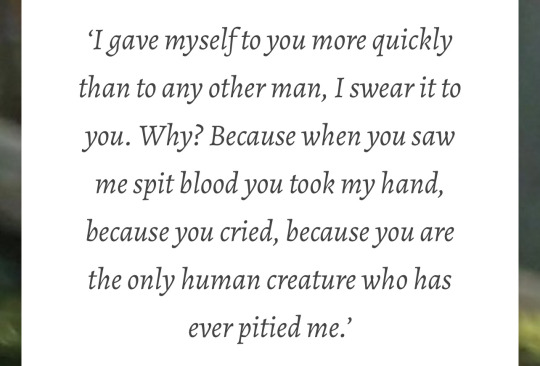

The image that comes to mind is their reunion on the school grounds in jjk 0 where they stare at each other and then Geto fakes this cheerful “long time no see, Satoru!” And Gojo is just icy, lol.
The above would seem to apply well to Gojo as well, for various reasons, namely how he lived his life, what he longed for, and his “enlightenment” where it gave birth to his supremacy and untouchability (distance, isolation) from others. Denoting him to almost being a “creature” due to being unable to relate to the limitations that plague sorcerer and humans.
It’s Gege’s favourite type of romance. His brief journey into BL had similar themes if I’m not mistaken. It may very well mean nothing too, of course. It is just information.
One of the sites I visited while researching Camellia’s in Japan, had referred to this novel and I was intrigued by why. To me it’s not reaching terribly far to find the doomed romance theme - it’s everywhere if you look for it.
But you know : to recognise it means that you equally recognise it is a kind of a romance. At the very least a form of love / connection.
Similarly, it’s only a breakup if they were ever an item of sorts.
And, Shoko was there but “would never love either of them”... inferring that love was the only exclusive thing between them that they alone shared, that she could not give to alleviate their loneliness.
Anyway, I’m a hopeless “satosugu kaisen” shipper and I admit it. Sorry if that’s not what you’re here for. It is nevertheless quite interesting to see what one can dig up; sometimes they’re highly interesting coincidences:
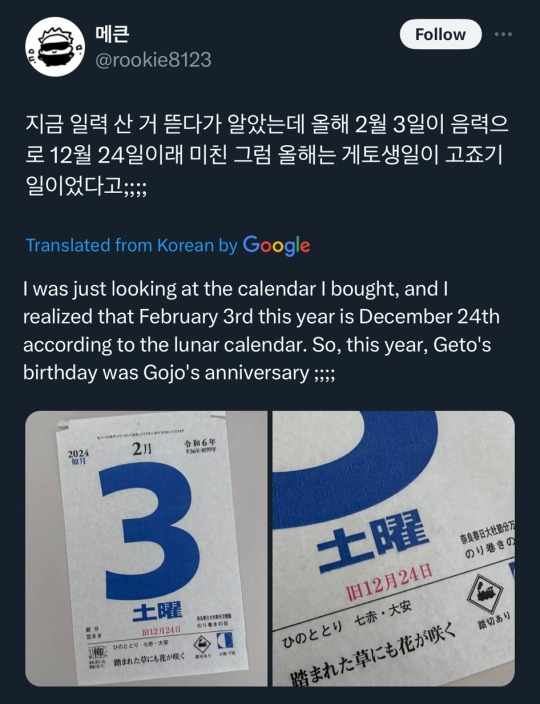
Like this one. It bloody has to be, right? Lol!
That’s it from me 😉 the rest is just indulgences:
Love the cover of vol 26 or hate it? Either way, it’s here to stay...
The Camellias spoke volumes (pun intended), in terms of symbolism for how he lived, what he shouldered, how he suffered, what he stood for, and fought for up till the very end. Honourable and honourably, even if there may be those who didn’t think so. We all fight for different reasons after all. It’s ok.
Our much-loved Gojo Satoru standing proud, smiling with his eyes, looking as soft as ever - with that fresh face, sporting his handsome smile (that borders on a smirk) playing on his lips, a little dimple appearing on his cheek. He looks self-assured, as if he were smiling a warm greeting, or imparting heartfelt farewell.
And I want to maybe interject here to return to a point about Gojo thinking about Geto when his breath tinged white one year ago.

In my previous post (purely indulgent)
I pointed out that gojo has been the only one who stylistically has been drawn with his breath tinting white, aside from uraume whose skills have something to do with ice. It seems to tie in with the death of Geto, which was just one year prior. And he was thinking about said person, in his conversation with Yuta.
It’s just a connection, nothing more and nothing less. And Gege didn’t have to, but Gojo was then shown to be reunited with Geto right upon his death. Parallel with emerging from prison realm and going to pseudo-Geto? It is also fitting that they die on the same day, one year apart, and Geto’s body that was inhabited by Kenjaku, was also released through Yuta and Takaba, not long after Gojo died.
And then the flower being Geto's birthdate flower? It's quite a few coincidences, even if any one wasn't deliberate. The anime goes as far as using Osmanthus flowers to depict their “first ‘love’” or blue spring. Geto’s name having “summer” in it, birthday being the start of spring (refer to chart above) and it being generally accepted that they’re each other’s “one and only (best friend)”. To me, it does seem like Geto represents the spring for Gojo’s deep winter.
Gojo wasn’t afraid of loving someone morally reprehensible... he wasn’t afraid of being stained. His sense of self was arguably either too hollow or too firm (firmly hollow?) for it to really matter. Just like his sense of responsibility - he was just searching for who Gojo Satoru was within the role as the strongest. I can see why the symbolism of longing and love are there in representation of flower language for Gojo, and scattered deeply within the series, as it is tied to Geto - his first and last blue spring.
There are countless other points of symbolism but I’ll end it here! Apologies if anything is innacurate - do leave a comment to correct me if you can.
Thanks for reading and drop me a comment with any thoughts, or hit <3 if you found it interesting!
#jujutsu kaisen analysis#probably needs more editing#jujutsu kaisen meta#satosugu#stsg#jujutsu kaisen#jjk analysis#jjk spoilers#jjk meta#geto suguru#gojo satoru#jjk#jujutsu Kaisen vol 26#jujutsu Kaisen manga#Gojo camellias#jjk flowers#jujutsu Kaisen interpretations#gojo satoru analysis#satosugu shipping#goge gego#goge#gego#jjk volume 26#jjk vol 26#gojo meta#satoru gojo#satoru suguru#suguru geto#jjk hanakotoba
34 notes
·
View notes